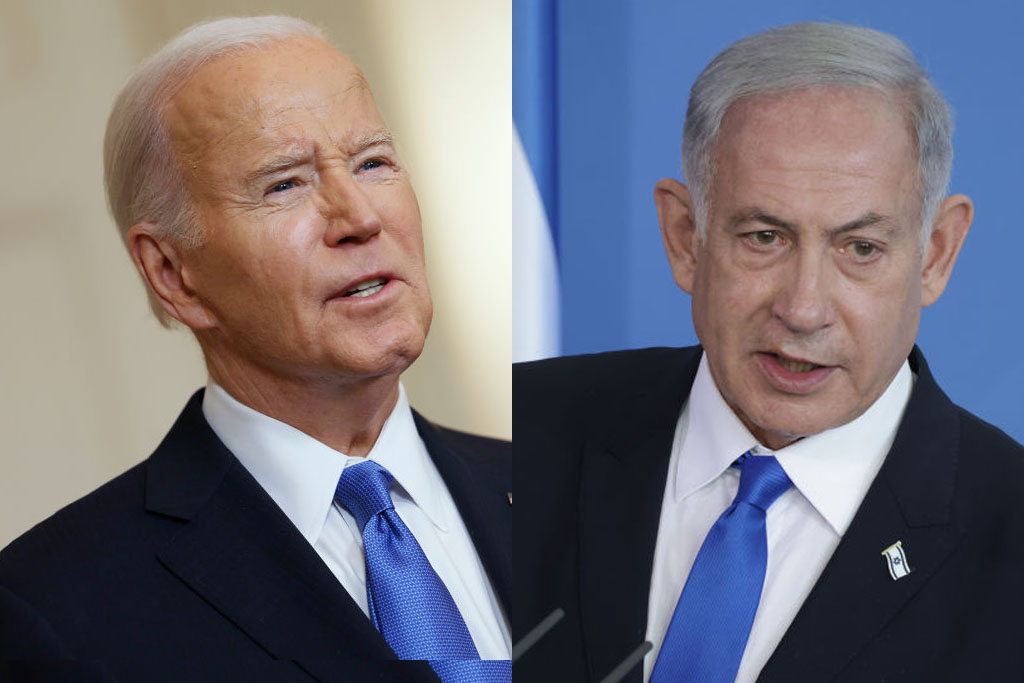Throughout this month, the world has heard Israeli government officials and their allies in the United States — particularly among the pro-settler crowd —
defending construction in East Jerusalem settlements on the grounds that “everybody knows” these areas will always be part of Israel.
“Everybody knows these areas in East Jerusalem will always be Israel,” goes the argument, “so when the Palestinians (and the Americans) make a fuss about new construction plans, it is just for political purposes, not because there is any real issue.”
Those peddling this rubbish are guilty of transparent manipulation. Those buying it are guilty of having short memories and an excess of credulity.
In 1993, when the peace process was taking off, the settlement of Ramat Shlomo — which earlier this month caused such a headache for Vice President Joseph Biden — didn’t exist. The site was an empty hill in East Jerusalem (not a no man’s land, as some have asserted), home only to dirt, trees and grazing goats. It was empty because Israel expropriated the land in 1973 from the Palestinian village of Shuafat and made it off limits to development. Only later, with the onset of the peace process era, was the land zoned for construction and a new settlement called Rehkes Shuafat (later renamed Ramat Shlomo) built.
If in 1993 you had asked what areas “everybody knows” would stay part of Israel under any future agreement, the area that is today Ramat Shlomo — territorially distinct from any other settlement and contiguous with the Palestinian neighborhood of Shuafat — would not have been mentioned.
The same can be said for the massive settlement of Har Homa, for which Israel issued new tenders recently (sometime after the Ramat Shlomo-Biden fiasco). Here, again, the argument is that “everybody knows” this area will forever be part of Israel.
But here again, we are talking about an area that at the outset of the peace process was empty land — devoid of Israelis, belonging mainly to Palestinians and contiguous entirely with Palestinian areas — that anybody drawing a logical border would have placed on the Palestinian side.
American pundits and members of Congress may be unfamiliar with or may have forgotten these inconvenient facts, but the Palestinians — who have watched Israel eat away at East Jerusalem at an increasing pace — have not.
Some will argue that these are the facts on the ground today, and the fact is that Israel will never part with the big East Jerusalem settlements. So, regardless of sins of the past, why make a fuss about new construction in them?
The answer lies in a closer look at what Israeli Prime Minister Benjamin Netanyahu means when he talks about what “everybody knows.”
Because if he meant that everybody understands what will be Israeli and what will be Palestinian in Jerusalem, this would potentially be great news: It could mean an agreement is possible, at least on
Jerusalem, tomorrow. And if that were what he meant, then just as he suggests that Israel can build without restrictions in the areas that “everybody knows” will stay Israeli, he would have no problem with
Palestinians building without restrictions in the areas that everyone knows will be Palestinian.
But there’s the catch: For Netanyahu, there is no place in Jerusalem that “everybody knows” will be Palestinian.
What Netanyahu really means is that East Jerusalem land falls into two categories: areas that “everybody knows” Israel will keep and where it can therefore act with impunity, and areas that Israel hopes it can keep by dint of changing so many facts on the ground before a peace agreement is reached that they move into the first category.
It is an approach that can be summed up as: What’s mine is mine, and what you think is yours will, hopefully, be mine, too. It discloses with stark clarity the underlying principle of Netanyahu’s Jerusalem policies: The status of Jerusalem and its borders will be determined by Israeli deeds, rather than by negotiations. More bluntly, who needs agreement with Palestinians or recognition of the international community when “everybody knows”?
And it is an approach that we see today on the ground, where Israel is doing its best — through construction, demolitions, changes in the public domain — to transform areas of East Jerusalem that have always been overwhelmingly Palestinian into areas that everybody will soon recognize as Israeli, now and forever. This is happening in the area surrounding the Old City, in the heart of Palestinian neighborhoods like Ras al Amud and Jebel Mukabber, and it is now starting to target areas like Shuafat and Beit Hanina.
The notion that a peace process can survive such an Israeli approach in Jerusalem is not rational. The notion that Israel can be taken seriously as a peace partner while acting this way is farcical. And the notion that the United States can be a credible steward of peace efforts while tolerating such behavior is laughable. l
Lara Friedman is director of policy and government relations for Americans for Peace Now. Daniel Seidemann is the founder of the Israeli NGO Terrestrial Jerusalem. Reprinted with permission from foreignpolicy.com.





















 More news and opinions than at a Shabbat dinner, right in your inbox.
More news and opinions than at a Shabbat dinner, right in your inbox.